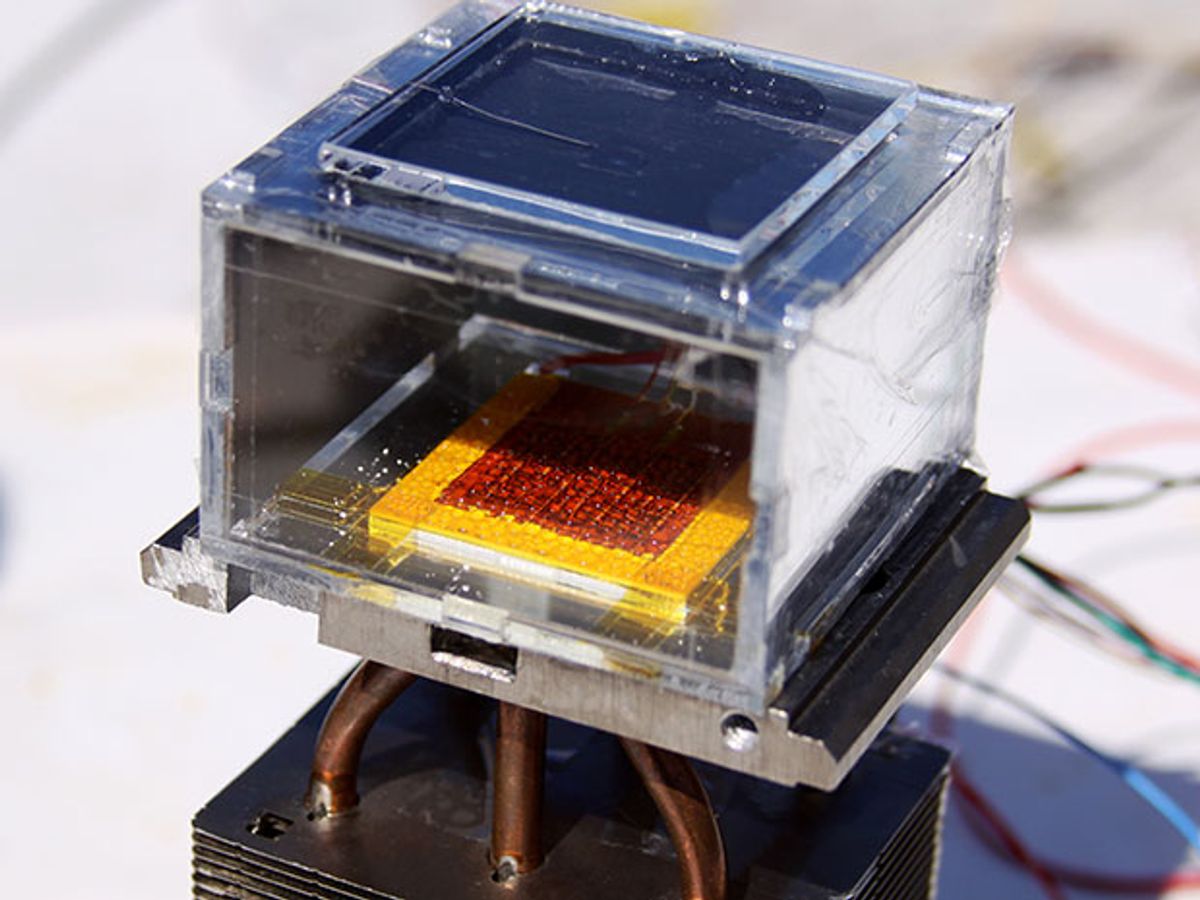A new device draws liters of water out of air, even in desert-like climates. And unlike that electric dehumidifier you might have running in your basement, it runs on the sun’s warmth. If it can be made at a low cost, the system could be used to provide potable water for the millions facing clean water shortages in developing countries and arid regions.
One in 10 people today still lack access to safe drinking water, according to the World Health Organization. Almost half of the people getting water from unprotected sources live in sub-Saharan Africa, and eight in 10 live in rural areas.
Many of these countries can’t afford the cost of desalination even if they are near large water bodies. Systems that use meshes or canvas to harvest fog are used in some developing regions, but they require relatively high humidity.
The new device traps moisture at 20 percent relative humidity, which is the level common in arid areas and deserts of the world. Researchers at the University of California, Berkeley and MIT reported in the journal Science that their prototype was able to pull 2.8 liters of water from the air over a 12-hour period in experiments done at 20 percent humidity and simulated sunlight. Rooftop tests confirmed that it works in real-world conditions.
“My vision for the future direction of this technology is to have water off-grid where you have a device at home running on ambient sunlight for delivering water that satisfies the needs of a household,” says Omar Yaghi, a professor of chemistry at UC Berkeley who led the new work with MIT’s Evelyn Wang.
The system is based on highly porous materials known as metal-organic framework, which were invented by Yaghi. These compounds, containing metal clusters linked by organic molecules, are being developed for applications such as storing hydrogen and scrubbing carbon dioxide from exhaust gases.
For the water-harvesting device, Yaghi and his team came up with a new MOF that has just the right balance of water-attracting zirconium units and water-repelling organic linkers. The zirconium units soak up moisture, and the water droplets group together in the perfectly-sized and shaped pores of the MOF. Increasing the temperature slightly makes the material release the water. “Water goes in at large quantities but at the same time the material doesn’t hold on to it too tightly,” Yaghi says.
The researchers infused a porous copper substrate with a kilogram of the MOF powder and attached it to a graphite-coated substrate. Then they enclosed those pieces along with a metallic condenser inside an open-air acrylic box.
The MOF gathers water from air. The graphite substrate absorbs sunlight and heats up the MOF, driving the water out of its pores as vapor, which gets condensed and collected.
Tests in a humidity-controlled chamber showed that the device could produce 2.8 liters of water at low humidity.
The MOFs are made from cheap raw materials, and the device shouldn’t be too expensive to make, Yaghi says. To get the device ready for commercialization, he is now working on new MOFs that could hold more water by weight, while Wang is trying to increase the device efficiency and output.
Prachi Patel is a freelance journalist based in Pittsburgh. She writes about energy, biotechnology, materials science, nanotechnology, and computing.



